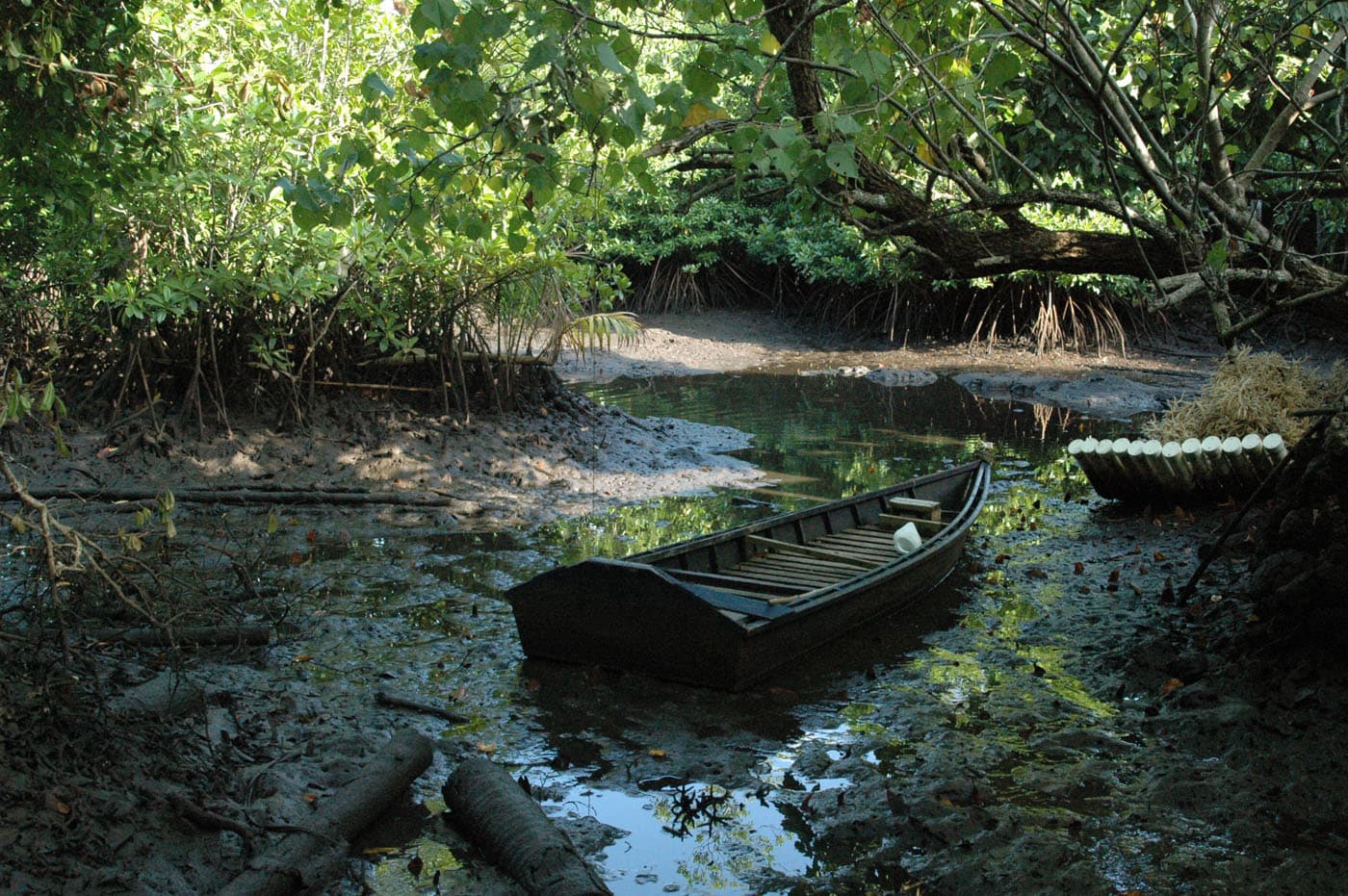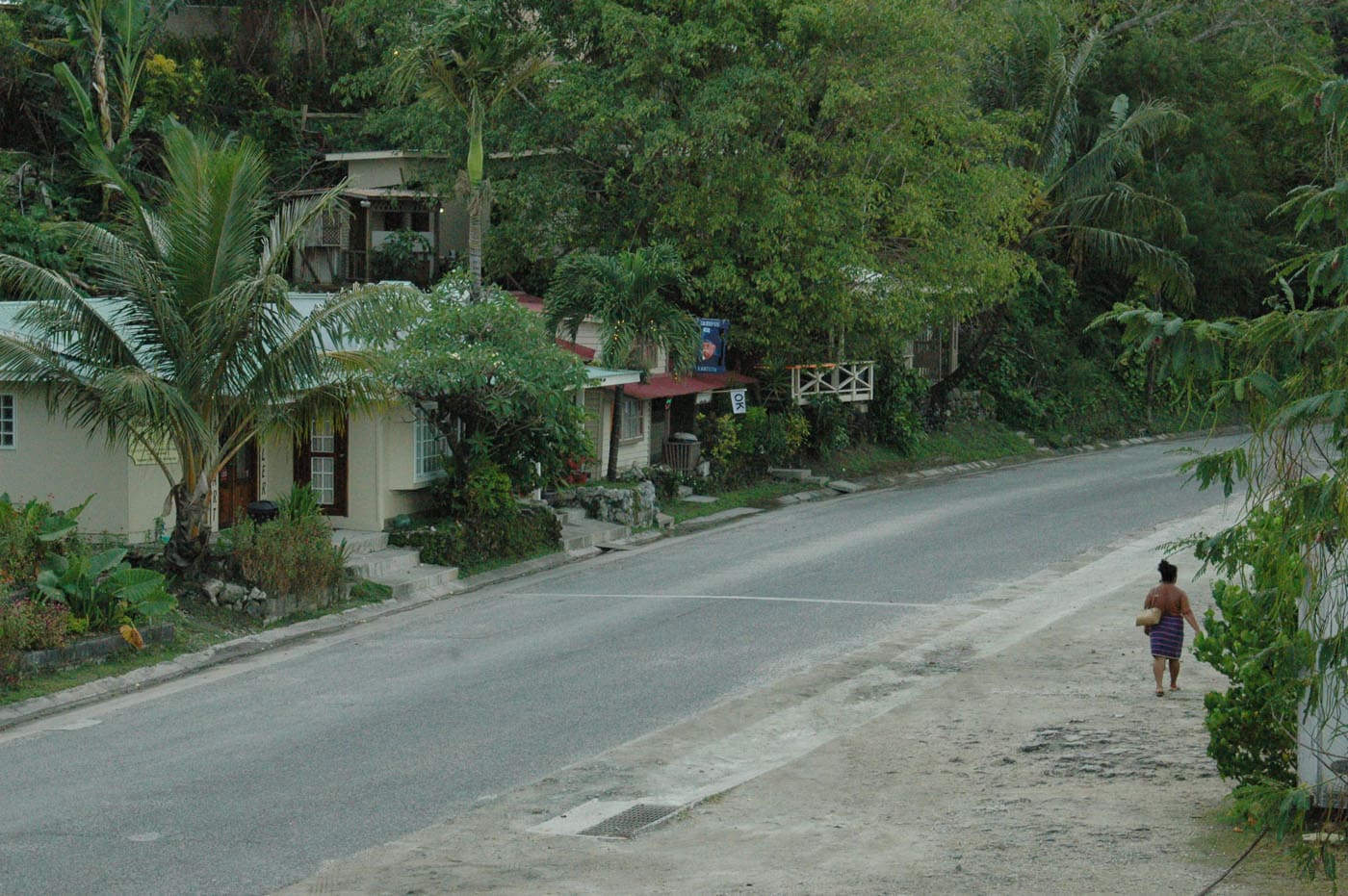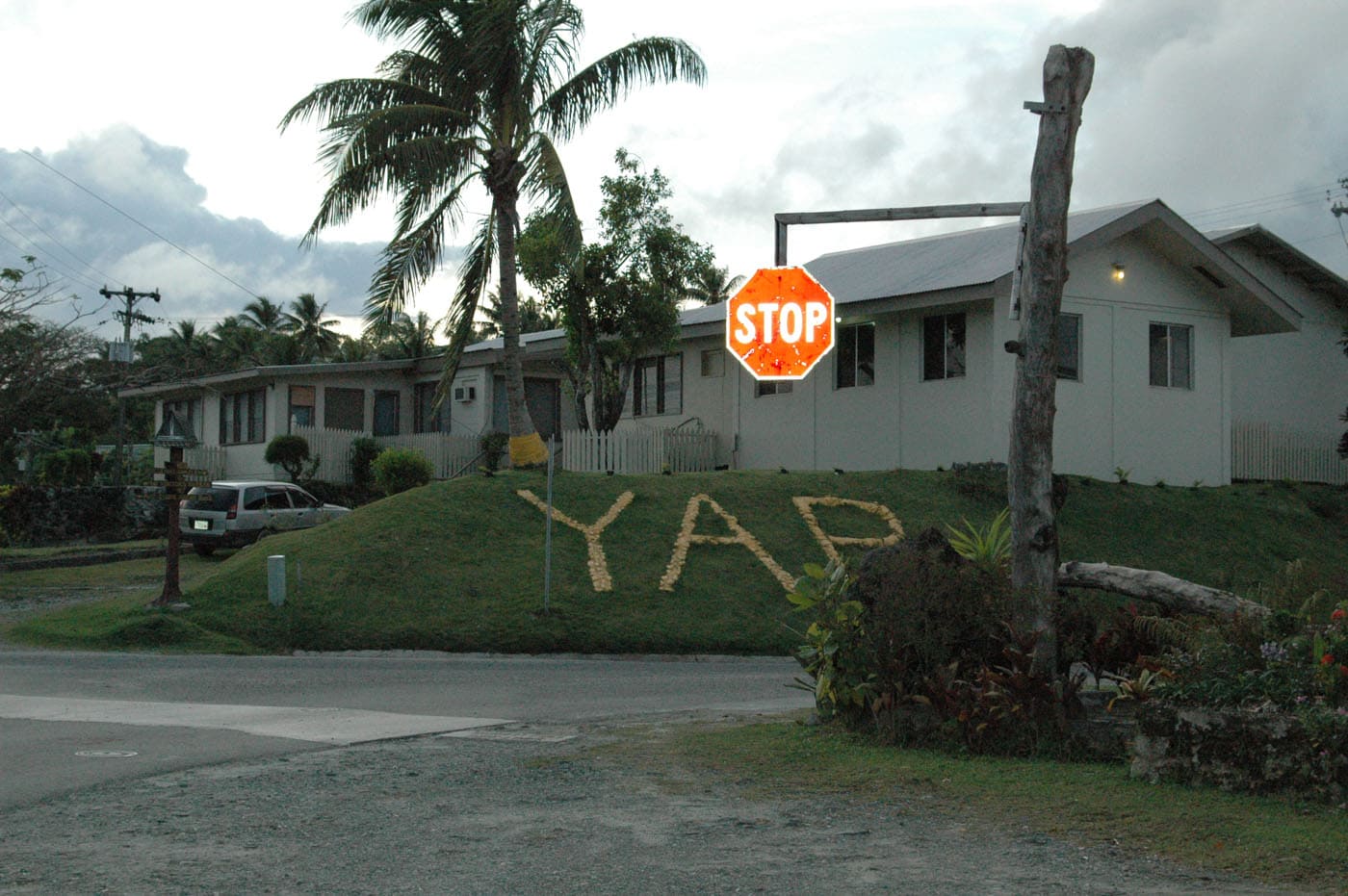Sacred Geographies – Yap
The exchange system known as sawei
The prehistory of human migration in Micronesia and Yap involved an initial settlement from at least five different sources beginning about 3,500 years ago. These five major colonizing migrations likely occurred some time after the initial island discoveries and involved involved intentional voyaging by skilled sailors and navigators because accidental “drift” discovery of either Palau or the Marianas is considered impossible.

- The settlement of the Mariana Islands about 3,500 years ago from the Philippines, based on a presence of nearly identical red-slipped and finely decorated pottery types in both regions. However, Marianas represented only a subset of the more diverse assemblages found in the Philippines. Indeed, a more diverse population flowed through the Marianas, as witnessed by the megalithic architecture with stone house pillars and capitals, formal village layouts, and intensively cultivated landscapes.
- The second migration was to Palau around three thousand years ago from a source in the southern Philippines or Indonesia.
- The third migrationoccurred approximately two thousand years ago, or slightly earlier, and was responsible for the peopling of Yap from an Oceanic-speaking source in Melanesia. Later contacts with other parts of Micronesia greatly influenced Yapese language and culture. Yapese people quarried aragonite limestone for making their large wheel-shaped stone money in Palau.
- The fourth major migration episode targeted the volcanic islands of Kosrae, Pohnpei, and Chuuk, and then spread into the numerous atolls that form most of the Caroline, Marshall, and Kiribati island chains.
- The fifth migration was part of a larger movement of Polynesians from the southeast into the various “Polynesian Outlier” islands scattered through Micronesia and Melanesia starting around a thousand years ago, leaving behind a record of monumental architectural ruins typical of Polynesian contexts.
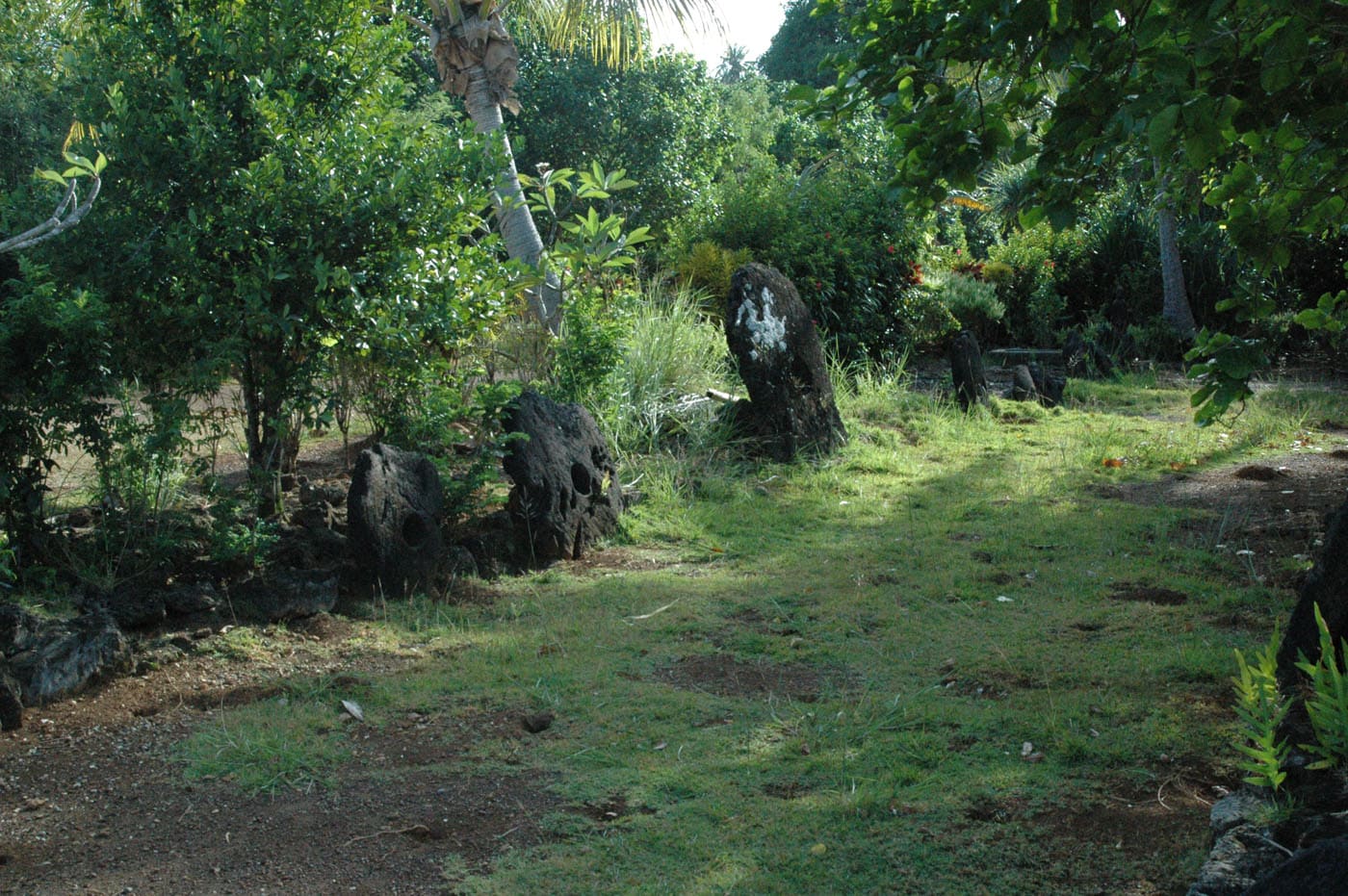
Yap was central in the intensive cultural exchange in Micronesia, famously involving the large #stonemoney discs quarried from distant islands of Palau and Guam. Smaller money items were made of specially prized shells.
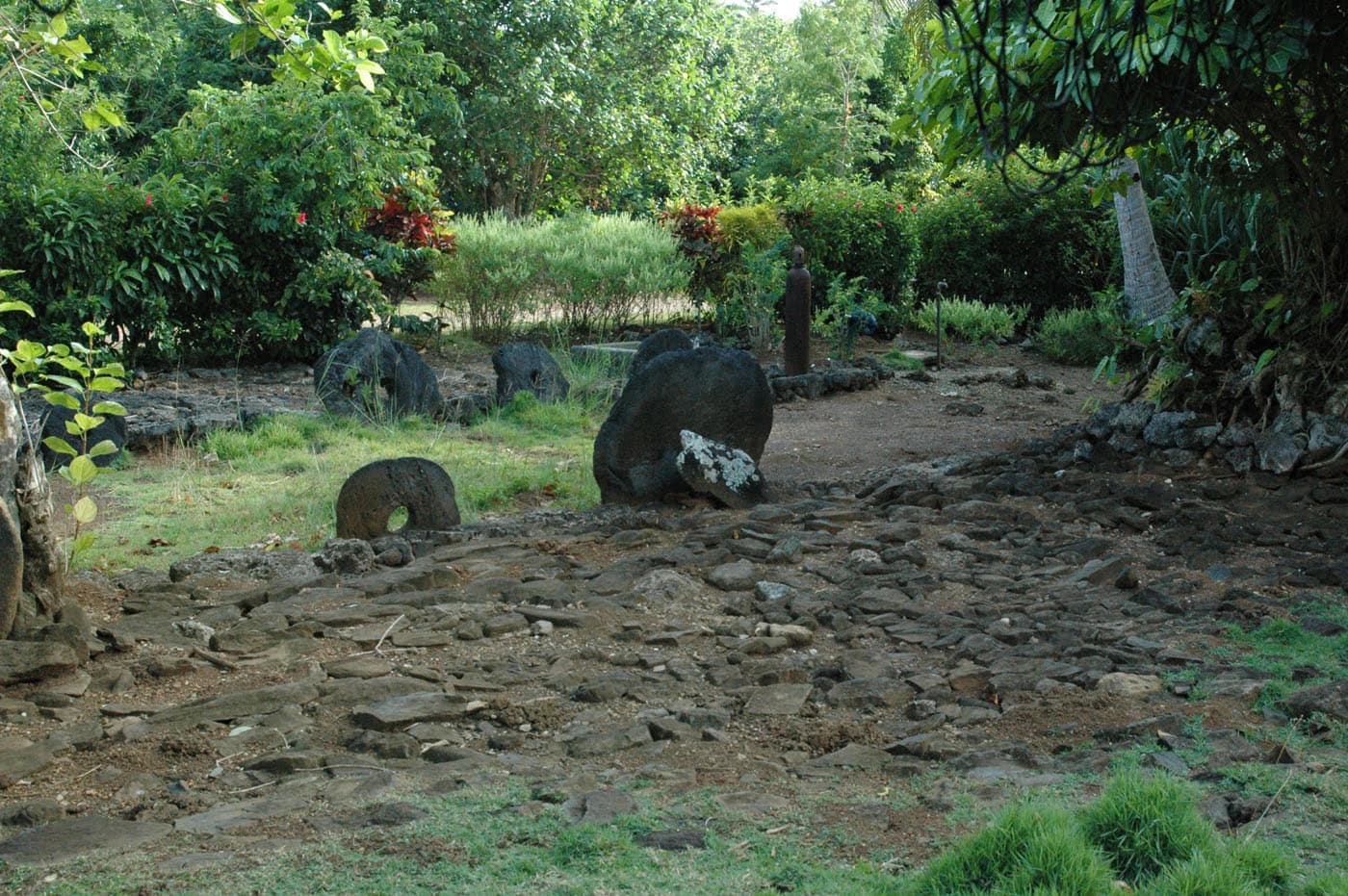
The formalized Yap-focused exchange system known as sawei guided movement of tribute among diverse and dispersed clans in the Caroline Islands, reflecting their past relationships via migration (Sudo 1996). The antiquity of the sawei potentially dates near the beginning of Yapese settlement about two thousand years ago, yet it became increasingly complex over time as more areas were settled and more relationships entered the system.
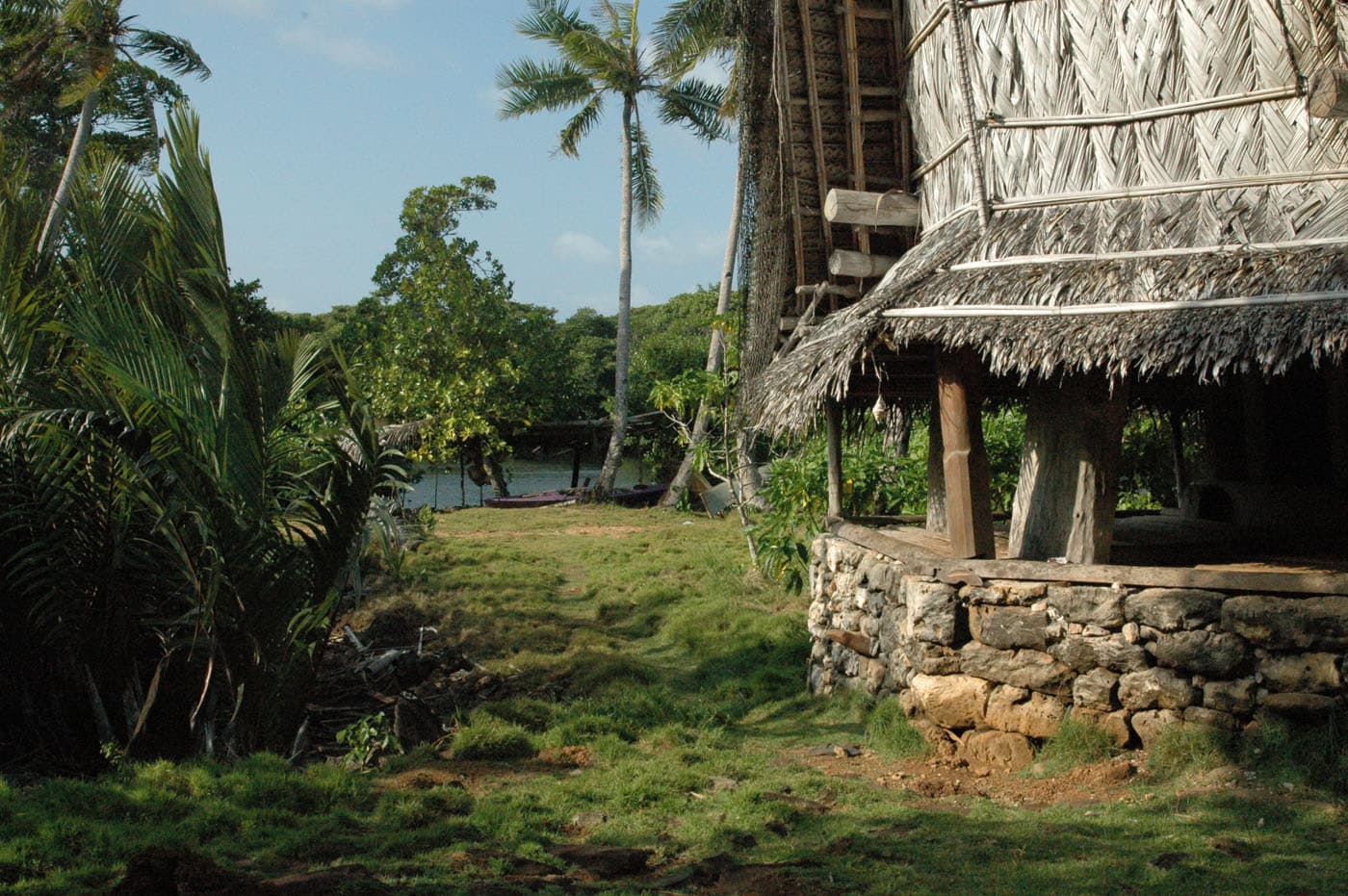
In traditional Yapese villages, specialist magicians mediated between humans and the spirit world and addressed the uncertainties of house building, fishing, gardening, and warfare. Prior to their conversion to Christianity, Yapese prayed to ancestors, breaking segments of mother-of-pearl shells as offerings.
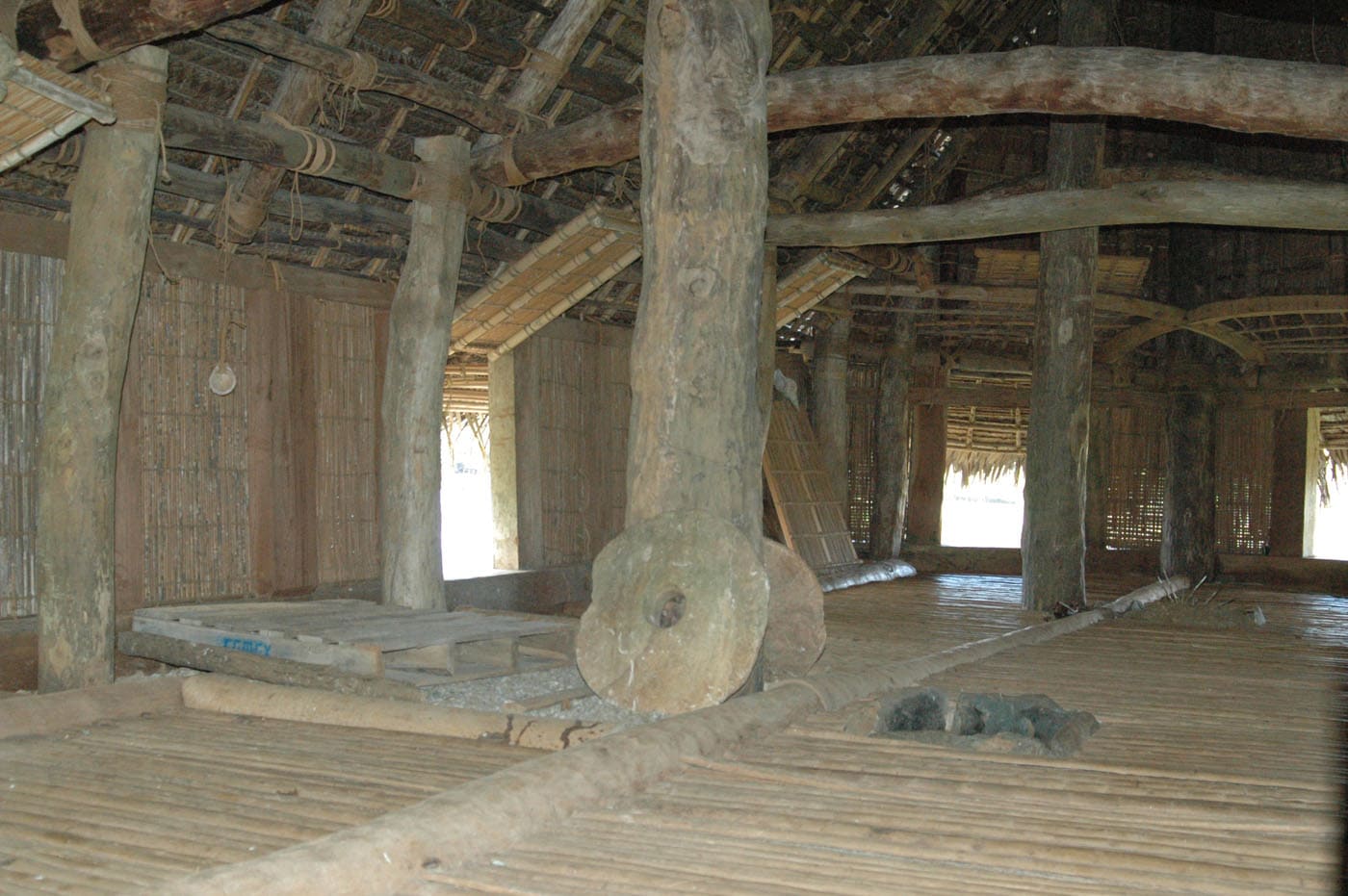
The welfare of all Yapese was thought to reside in several sacred places for which particular families had responsibility and from which they derived power. The traditional priest cared for the sacred place and organized the sacred calendar, which included rebuilding the sacred house, making annual offerings to the spirits of these places, and divining the future of warfare and politics in Yap. The eating-class initiation, still observed by a few contemporary Yapese, involved periods of isolation, preparation of new loincloths and personal items, fasting, and ceremonial feasting at the end of the isolation period. Individuals who observed this Ritual moved into a higher-ranking eating class and gained Political and social influence in their villages.
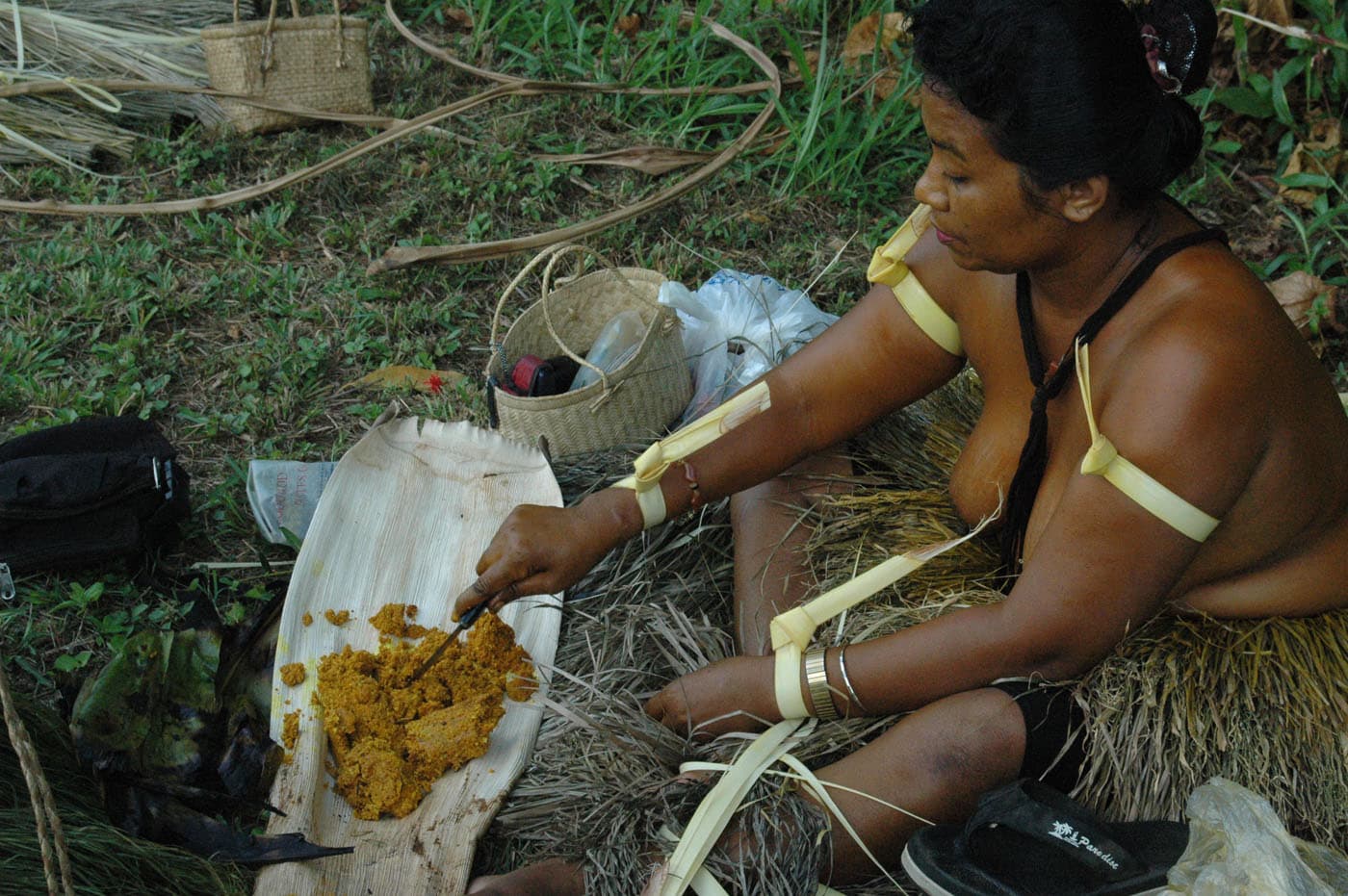
Traditional Yapese ceremonies have been all but forgotten by Yapese people. The only persisting forms of traditional ceremonies are the sitting dances, which provide a public drama of storytelling and recounting of myth. People have also borrowed standing and stick dances from other Micronesians.
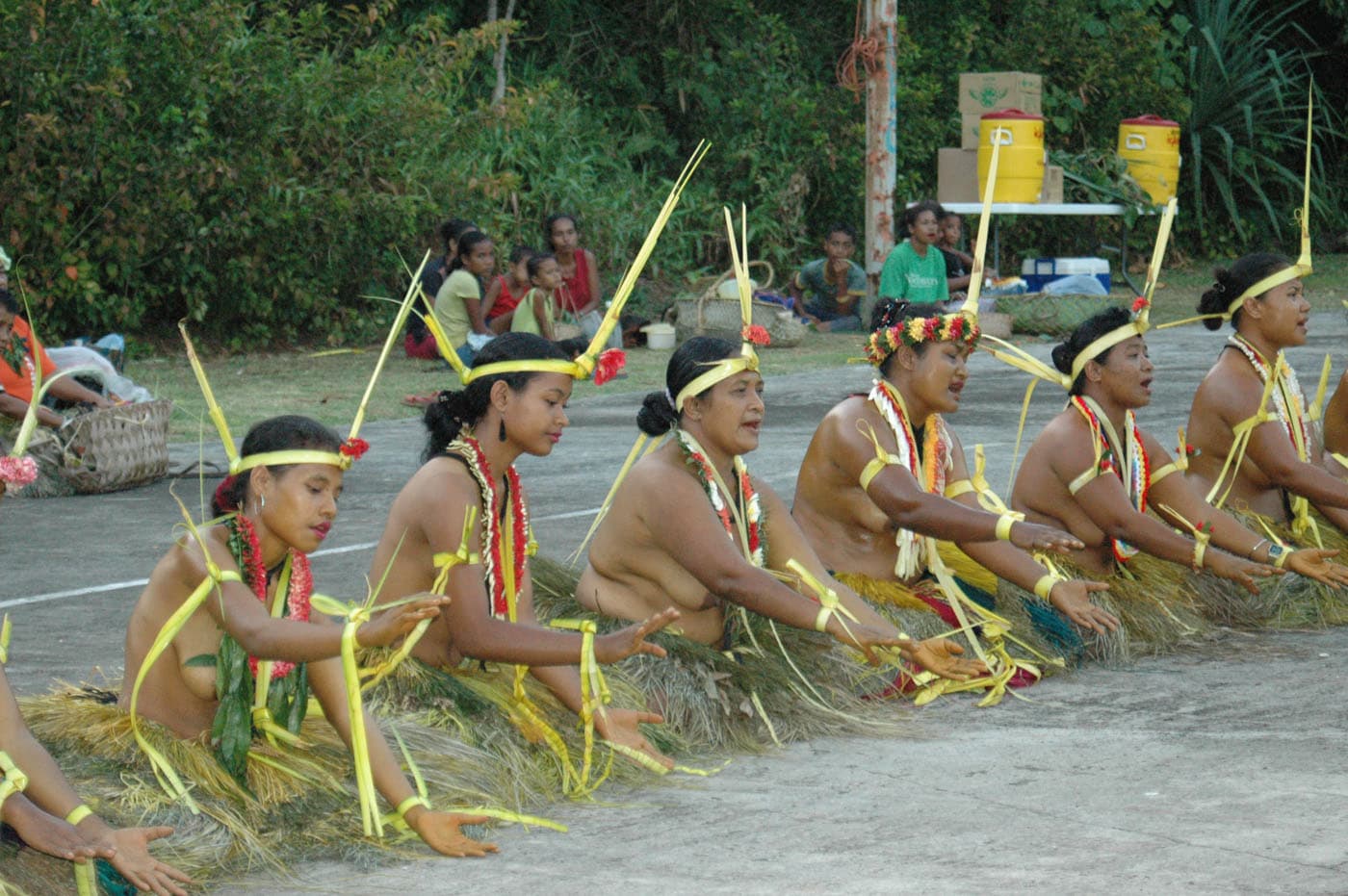
While diving the beautiful seas of Yap, I’ve discovered Manta’s cleaning stations and beautiful reefs; I did one of the best drift dives of my entire life here!!! At the diving center, a member of the village showed me a “Gaw”, a valuable reserved for chiefs consisting in a necklace formed of shells and whale teeth. The “Gaw” was first brought to Yap by the ancient navigator Angumang of Teb village in Tomil, who stole from the Chuukese. Another important Yapese valuable is “Yar”, or shell money. There are four kinds of Yapese shell money that are used for important events like marriage proposals and celebrations, as well as to tender traditional apologies. Shell money is also used as payment for local medicine. Today, you can buy one at the local souvenir shop, crafted as in ancient times at the craft-mans house.
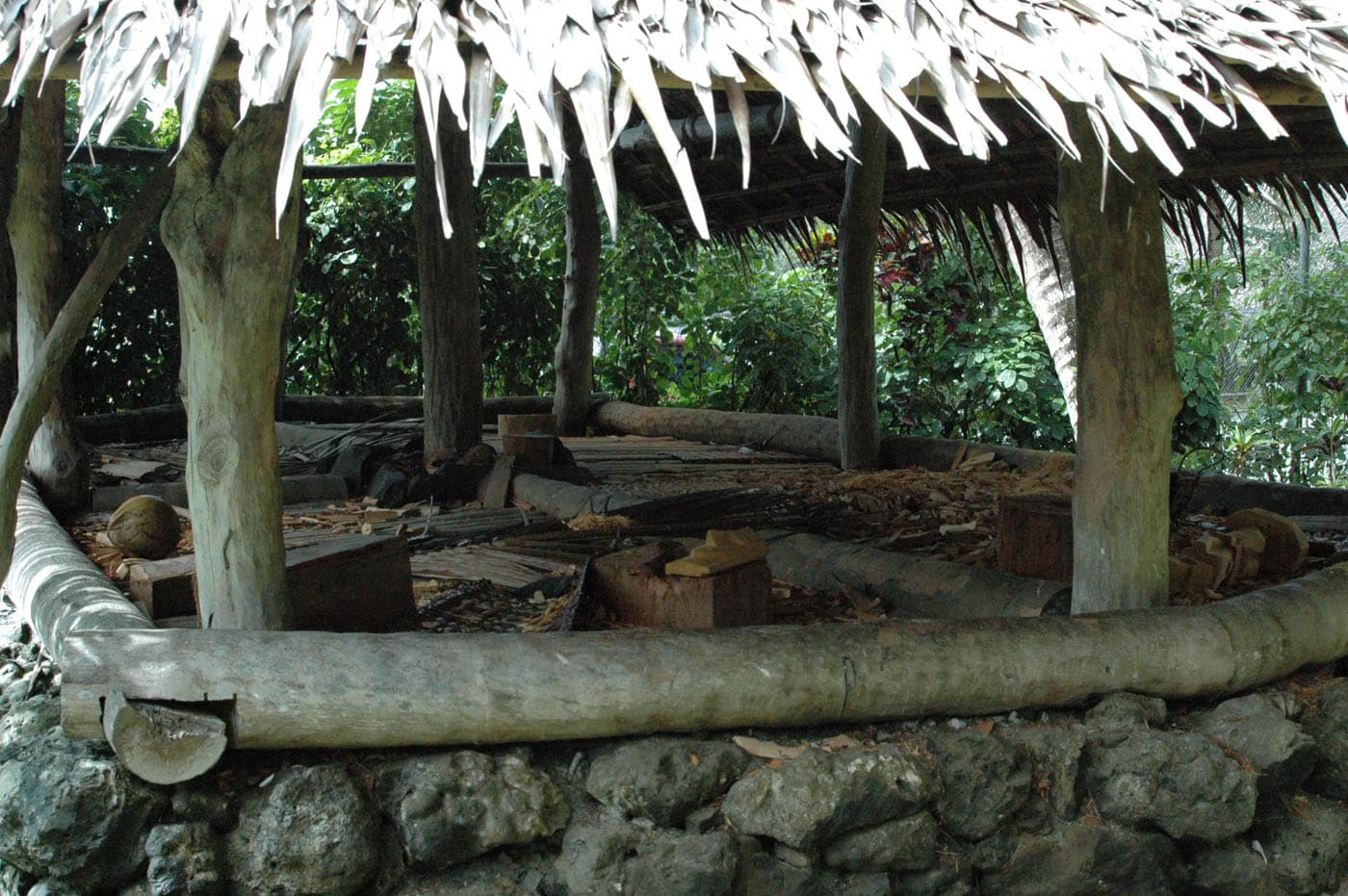
However, the tourism industry does not shield the island from the impact of the western societies and its consequences. Indeed, modernization (not so much political as socio-economic) has greatly altered the course of life for Micronesians as demonstrated by the rapid transformation under the impact of U.S. administrative policies of recent years. Rapid socio-cultural change, years of formal education in American-patterned schools, the opportunity to attend college abroad, and the considerable influence of their peer groups have all been important contributing causes of the development of a youth subculture. Many Micronesian adults see the young as attempting to subvert the traditional values and customs to which they claim to adhere.
References.
Carson, Mike T. (2013). Micronesia: Archaeology. In Immanuel Ness and Peter Bellwood (Eds.), Encyclopedia of Human Migration, Volume 1: Prehistory (pp. 314– 319). New York: Wiley-Blackwell.
Yapese Culture. Retrieved from https://www.everyculture.com/Oceania/Yap-Religion-and-Expressive-Culture.html
